
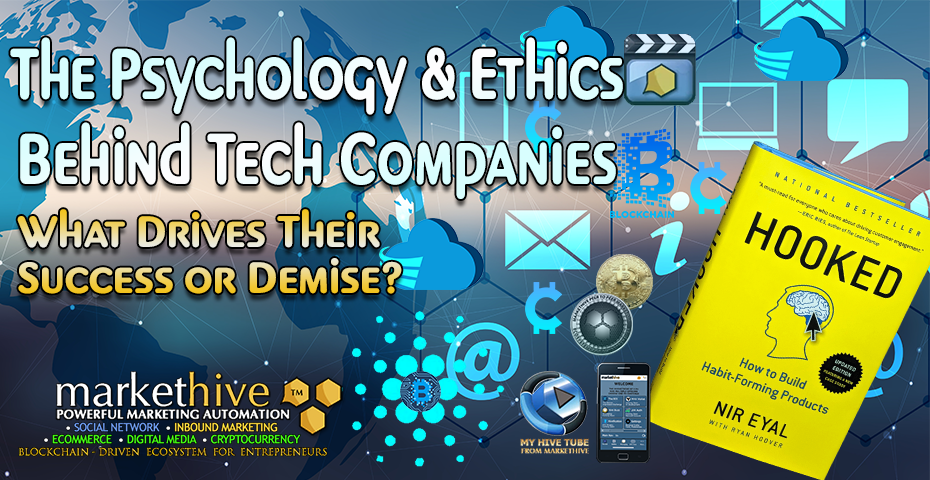

After reading Nir Eyal’s book Hooked, I found it quite inspiring and immediately saw the correlation of this hooked model to Markethive. He examines the psychology and ethics of the technology companies and their products that captivate and keep us engaged. There was a lot to unpack, however, I have outlined the principles in this article.
Nir Eyal has identified that habit-forming products can do far more good than harm. He believes the trinity of access, data, and speed presents unprecedented opportunities to create positive habits.
“When harnessed correctly, technology can enhance lives through healthful behaviors that improve our relationships, make us smarter, and increase productivity.” Nir Eyal.
With all the unfavorable press relating to Facebook, Twitter, and the like, here is a more positive take on what many have thought as an addiction resulting in negative consequences.
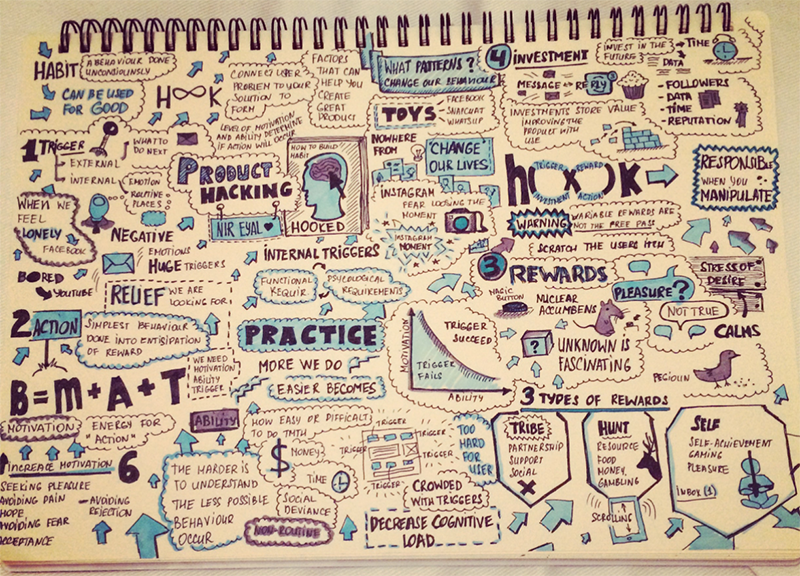
Image by - Galina
Habits are actions we often do without even thinking about doing them, and industry experts believe we look at our phones 150 times a day. So when we see our phone on our desk and grab it without intending to, we're hooked.
For whatever reason, most of us use our devices several times a day, and it quickly becomes an integral part of our day, with the notion we can’t live without them. And for some, it’s not just a tool they use sometimes, but rather an addiction.
Habit is an automatic behavior that happens without conscious thinking, and on the contrary, addiction has a negative connotation. You are addicted to a substance or behavior that negatively affects your life. By definition, addiction is self-destructive; a habit is a behavior that can positively impact an individual’s life.
The hooked model is a virtuous cycle, and Nir Eyal says it's like an itch that needs to be scratched. The hook model he proposes starts with a trigger that triggers an action that brings a reward that forces the user to invest in the product again, which in combination causes him to use it again and again.
Habit-forming platforms and products change user behavior and create unprompted user engagement. The aim is to influence users to utilize the product independently, repeatedly, without relying on overt calls to action such as advertisements or promotions.
Nir Eyal believes the hook model’s principles can be used to create apps that are addictive; however, he advises against it. It is better to develop an app that positively impacts the user, solves problems, or fulfills their needs.
Creating habits can be a force for good but can also be used for nefarious purposes. As creators and facilitators, an element of moral and ethical responsibility comes with their innovation; however, much of the responsibility is the users’ ability to maintain a healthy threshold.
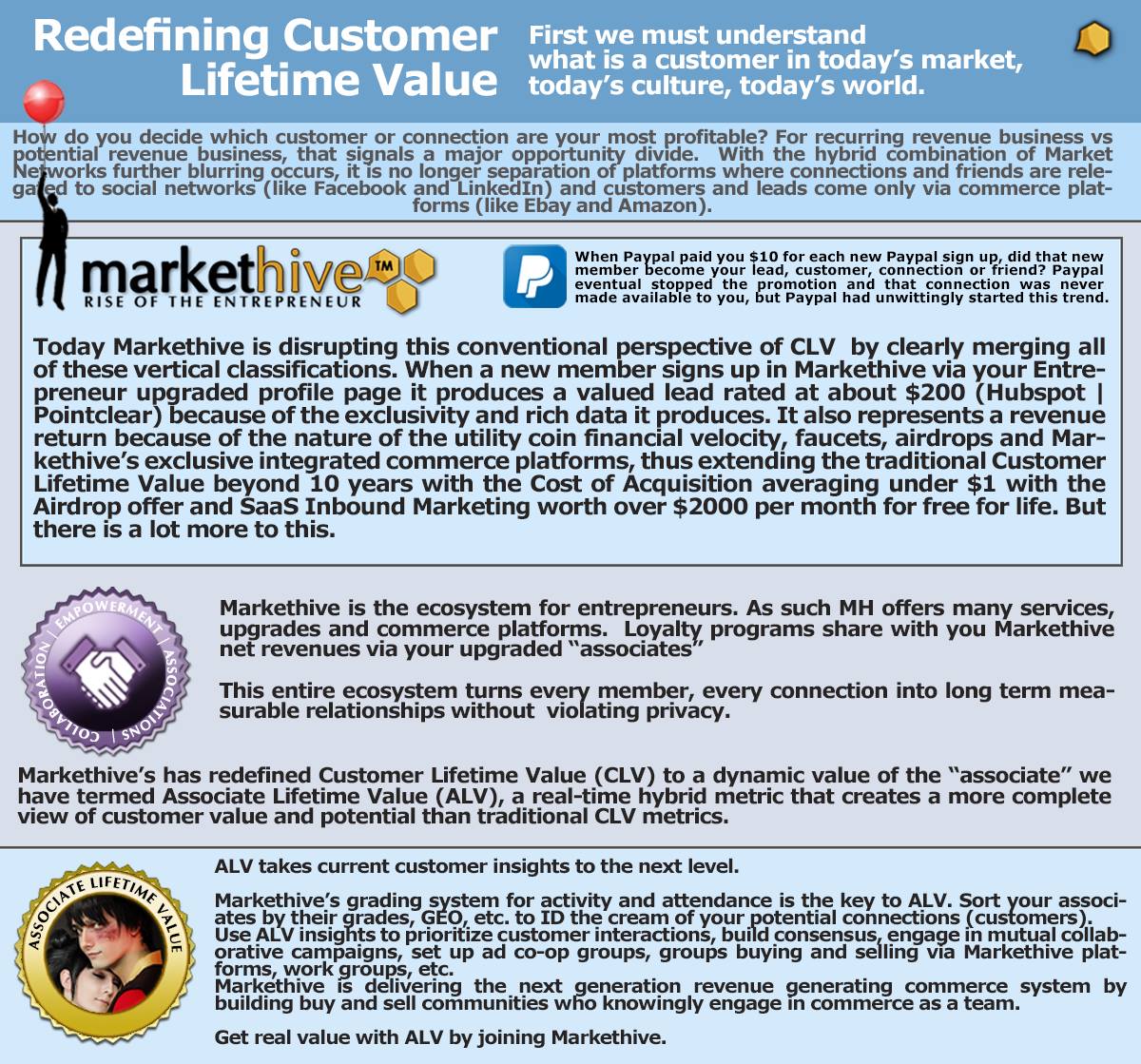
User habits increase how long and how frequently customers use a product, resulting in a higher CLV. (Customer Lifetime Value)
Many entrepreneurs with the desire to build products that are only marginally better than their competitors hope their innovation will be good enough to entice users away from the existing products.
The fact is, “old habits die hard,” so for new companies to stand a chance, they can’t just be better; they must be nine times better, according to John Gourville, a professor of marketing at
Harvard Business School. He also posits that many innovations fail because consumers irrationally overvalue the old, while companies overvalue the new.
It’s important to note that the Hooked Model does not get people to do things they don’t want to do. The product must be useful and have a reduced amount of steps resulting in ease of use.
The one aspect that all successful companies with habit-forming products have is that they solve a user’s problems. It creates associations in the users’ minds that the solution to their problems may be found in the product’s use.
A habit-forming product consists of a 4-step loop to hook you, and each successive loop increases the probability that the next loop will occur and cause the flywheel effect. A habit is a shortcut in the brain: It’s an automatic behavior carried out without much thought. A habit is cultivated when a continuous action solves a perceived problem.
A trigger, being the first in the loop, initiates the behavior and starts with external triggers such as paid advertising or email to draw users’ attention or any call to action. However, true habit-building revolves around the power of internal triggers. When a product is closely linked to an existing routine, it is more effective than paid advertising. In many cases, it eliminates the use of external triggers, especially when the product is linked to thoughts or emotions.
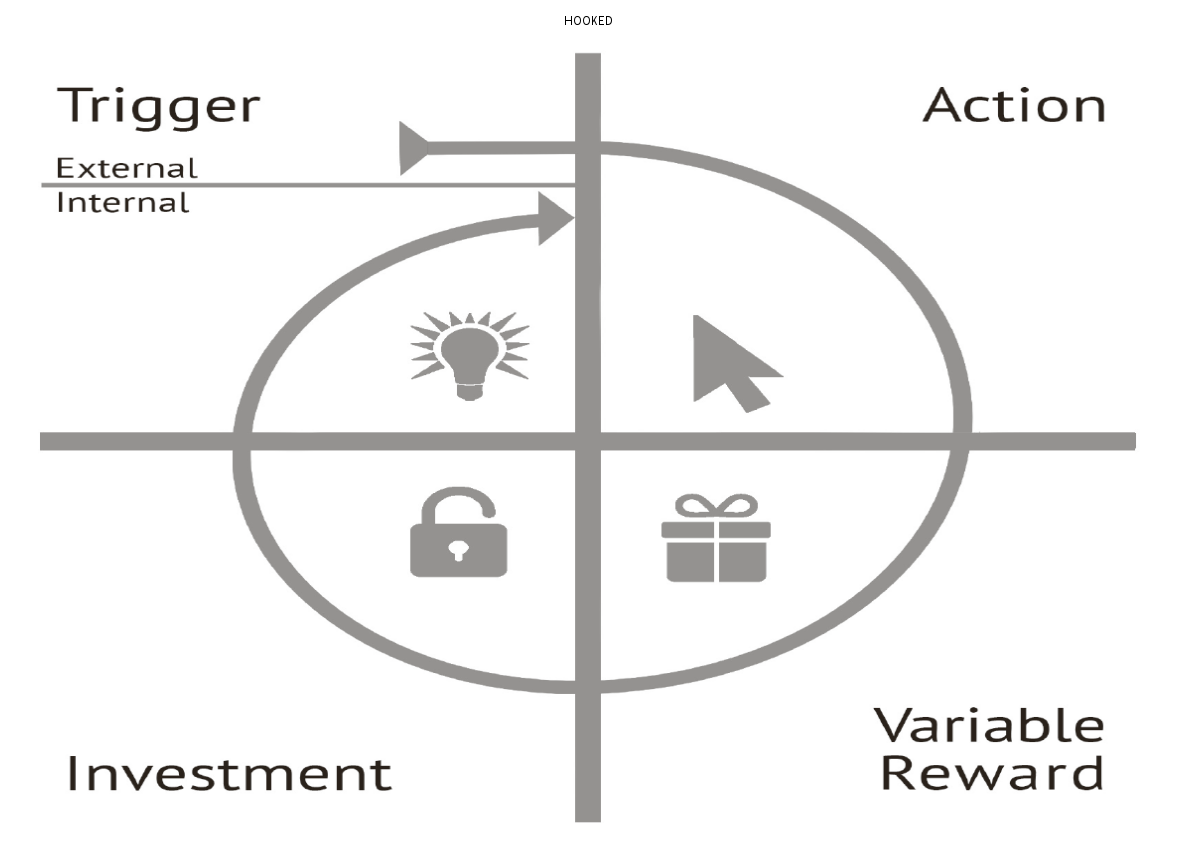
Image by Nir Eyal
An external trigger tells the user what to do next, based on the information stored in the environment or medium received. In a developing product or platform, behavior often starts with an external trigger, often through advertising, email, relationships, and social pressure.
Internal triggers happen more organically: They tell the user what to do next through associations stored in the users’ mind. This is a by-product of the product or environment itself, a designed element and game mechanism that generates impulses that can become a habit for the user.
Companies need to deeply understand their users’ needs to develop better habit-forming products. To scratch the nagging itch of negative emotions, we thoughtlessly and automatically resort to relieving that uncomfortable feeling. Usually, it’s an environment where we are familiar with that validates us when we feel alone, and Google is one click away.
Emotions are potent triggers and influence our daily lives, but internal triggers manifest in our minds. This is the case when users have already gone through the Hooked model once or several times. For example, you yourself trigger a need or want to open the Instagram app or visit Markethive without any external interference.

Image by behaviormodel.org
Nir Eyal described the action as the simplest user behavior in anticipation of reward. This action consists of three aspects: trigger, ability, and motivation. For any behavior to occur, a trigger must be there simultaneously as the user has sufficient ability and motivation to take action. This is demonstrated in the Fogg Behavioral Model known as B-MAT.
Motivation is created by the goals and needs that the user wishes for, particularly when the ability is increased by the facilitator making the action more comfortable to do. People are motivated to seek joy, avoid pain, seek hope, avoid fear, seek acceptance, and avoid rejection.
Ability is the most basic element of the product experience and provides the quickest route from the get-go, being the trigger through to reward. The trigger exists to get the user to act, but the trigger is useless without action. Friction in the ability to do something or slow a user down can mean frustration, and frustration can mean users never bridge the gap between trigger, reward, and beyond.
Habit-building products use two fundamental drivers of human behavior to increase the likelihood of action: the ease and speed with which an action is performed and the psychological motivation leading to a degree of satisfaction.
Psychological experiments have shown that interest in continuing a particular activity can be lost if a specific action is consistently and permanently rewarded. It has been proven that uncertainty of whether or not you get a reward is what drives an individual, so the expectation of the reward is greater than the reward itself.
The reward generates a hankering and curiosity in the user. Nir Eyal also emphasizes that product rewards should be variable, as variable rewards are one of the most powerful tools companies use to engage or “hook” their users. Variable rewards amplify the effect that is connected with needing and desire.
Studies have shown that it is not the reward itself that motivates users to act but the desire for it, which satisfies both desire and reward. A product or platform needs to have infinite variability to succeed at habit-forming.
Habits can be broken, and user engagement decreases when the product becomes predictable, so the real key is variability and maintains user interest by offering a certain degree of novelty, which corresponds to the user's desire.
In March 2012, Farmville was valued at more than $10 billion, but by November 2012, it had fallen by more than 80%, and by March 2013, it was worth less than half that. People were less engaged because of the predictability of it. By keeping the rewards unpredictable, users are encouraged to repeatedly engage with the product in hopes of receiving or seeing something new.
For example, watching a television show or series is generally a finite variability, but content creation is infinitely variable. Sites like Markethive, a platform for entrepreneurs, designers, and artists to showcase their work, exemplify the longer-lasting engagement from infinite variability.
Companies with products utilizing infinite variability stand a better chance of holding on to users’ attention, while those with finite variability must continuously reinvent themselves just to keep pace.
The most habit-forming products and services practice one or more of the three variable reward types: the tribe, the hunt, and the self.
It’s important to note when our autonomy is threatened, we feel constrained by our lack of choices and often rebel against doing a behavior. Psychologists call this reactance. Maintaining a sense of user autonomy, agency, and trust is an absolute must for sustained engagement.
Predictable rewards don’t cause cravings. On the other hand, variable rewards lead to more intense dopamine hits and drive users to desire the next hit, Nir Eyal has found.
The type of investment discussed here is the process of time and effort the user puts into a product or service and uses it to create a value store. With successive hook cycles, the product or company could achieve its ultimate goal of bringing users back without relying on costly advertising and marketing.
Unlike the hook-action phase that delivers immediate gratification, the investment phase is about the anticipation of longer-term rewards. Investments increase the likelihood of users returning as they develop and accrue their work in the form of content, data, followers, reputation, or skill. Investments also increase users’ potential passing through the hook cycle again by loading the next trigger to start the loop all over again, therefore becoming habitual.
Eyal cites what Dan Ariely calls the IKEA effect, which suggests that people generally attach more value to things they’ve assembled or partially created because of the effort they put into it. The IKEA effect is described as "labor alone can be sufficient to induce greater liking for the fruits of one's labor, giving it more value to the owner, sometimes disproportionately.”
Finally, Nir Eyal discusses the importance of incorporating mechanisms allowing users to invest back into the product. For example, Markethive has many platforms within the system; Social, posting, blogging, video, broadcasting, email, conference rooms, digital media, curation, etc. All with the autonomy and privacy, lacking in social media companies such as Facebook and Twitter et al.
Once a user has invested in a product, it is much more likely that they will continue to use it to protect and develop their investment. Users invest not only because they like it but also because of the value they invest in it.
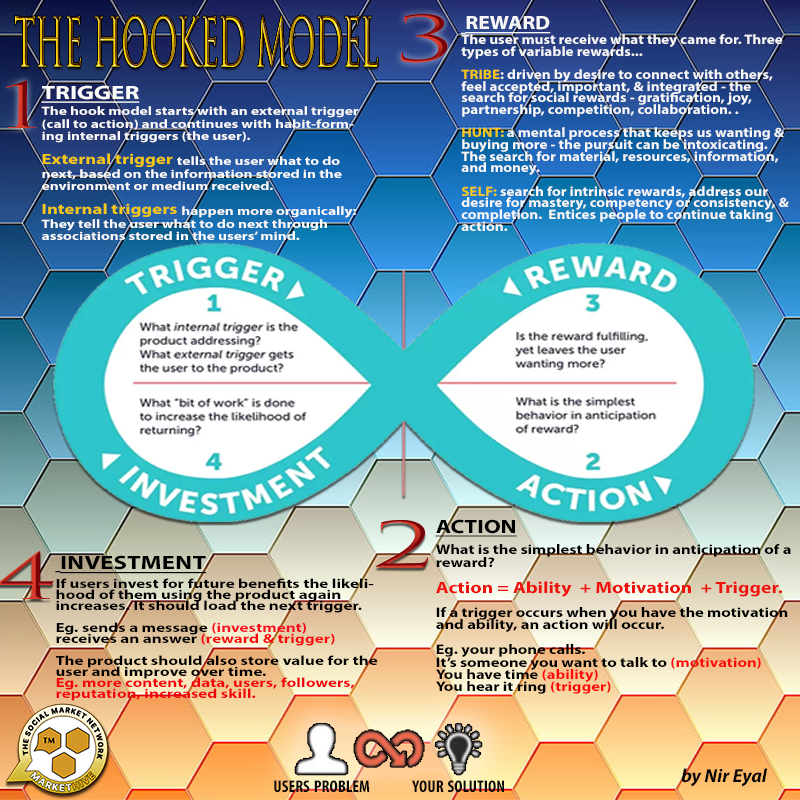
Companies that can better adapt to user habits’ evolution have a clear economic advantage. The Hook is an experience designed to connect the users’ problems or needs to a company’s solution and helps shape user preferences and attitudes. An enterprise that understands how to impact users positively helps them find purpose and engage them in something meaningful.
In essence, a start-up company looking to solve the problems that have emerged with the tech giants can’t be a Facebook or YouTube clone. Also known as a me-too platform and there are many popping up varying only slightly from their competitors, like offering the right of free speech.
As stated above, they must be nine-times better and continue to evolve, offering infinite variability for sustained engagement.
Just on a side note: Some new platforms, in my experience, seem to be just as divided and derisive as the oligarchs. A stage for venting their grievances and, in my opinion, maybe just as harmful. Although they may offer a more truthful perspective on current events, they offer very little else in terms of entrepreneurialism.
As Facebook continues to lose daily and monthly active users due to its “cancel culture” and tyrannical antics, Markethive continues to make significant headway in establishing itself as the next tech giant of ethical and sovereign means.
Markethive is not a clone and has never been a follower, always been a leader in innovation. Markethive is a vision and calling of the lord, making it not of the world. We are in the world, but not of the world. We, therefore, conduct ourselves differently.
Markethive’s new designs for its various and specific news feeds allow you to remotely post just a snippet from your videos, blogs, or buzz feed, just enough not to get flagged, that includes a link back to Markethive to view the content in its entirety. This unique interface is compelling. Now we don’t have to tippy-toe around our social media accounts in fear of being canceled or censored.
It’s worth noting that we still need our other social media accounts, at least until they become another MySpace and wipe themselves out with their oppressive conduct. There are still so many users still locked in habitually or looking for another platform.
To have political power or power over the press and tech giants to get the word out and reach millions of people in a somewhat covert way, Markethive can do that automatically with its specific news feeds. A unique format, and no other platform, including the new free speech advocates, is doing this.
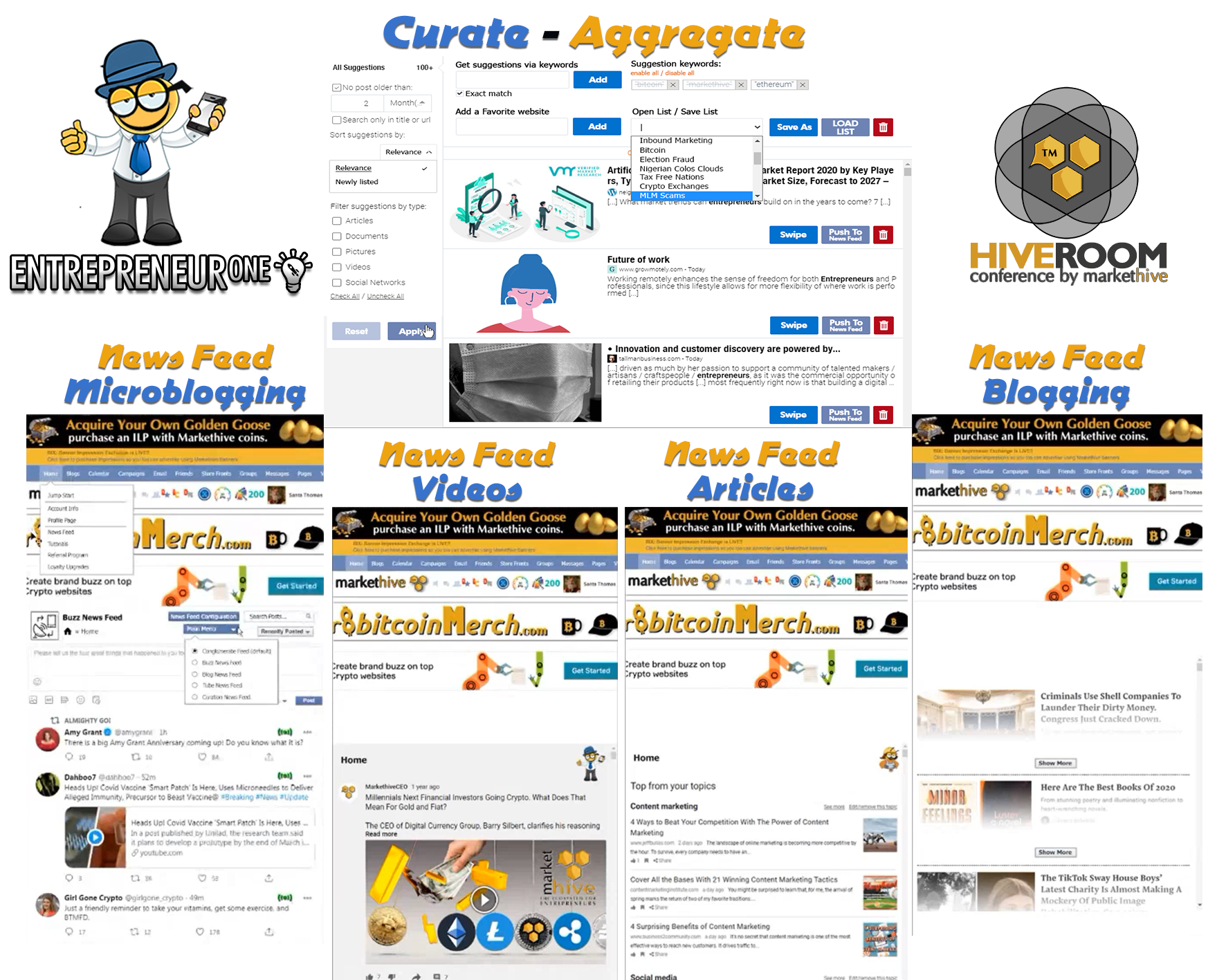
Mike Maples Jr., a Silicon Valley “super angel’ investor, likens technology to big-wave surfing. He believes technology waves follow a three-phase pattern:
In 2012, Maples said,
“In my experience, every decade or so, we see a major new tech wave. They start with infrastructure. Advances in infrastructure are the preliminary force that enables a large wave to gather. As the wave begins to gather, enabling technologies and platforms to create the basis for new types of applications that cause a gathering wave to achieve massive penetration and customer adoption. Eventually, these waves crest and subside, making way for the next gathering wave to take shape.”
Wherever new technologies suddenly make behavior easier, new possibilities are born. The creation of new infrastructure and interfaces often opens up unforeseen ways to make other actions more straightforward and rewarding.
Interface changes suddenly make all sorts of behaviors easier. Subsequently, when the effort required to accomplish an action decreases, usage tends to explode. New interfaces can lead to transformative behavior change and business opportunities.
Markethive champions this concept, never complacent, and always stays ahead of the curve. One clear example is our move to the Cardano Blockchain where Markethive can secure its own blockchain. In light of Ethereum and the ERC20 falling short with their support and expensive fees, the transfer to Cardano will benefit us as a community and the Markethive ecosystem on the whole.
Markethive Founder and CEO Thomas Prendergast recently commented,
“We are close to the launch of the Apprentice program, the release of the wallet, and listings on the exchanges. We still have a lot of work ahead, but we are off the elitist systems, being Amazon, Google, and Microsoft, where we were hosted in their clouds. We have also left Cloud Flare, which has direct ties and is influenced by Google.
As we have seen these elite tech companies’ political tyranny, I decided it was best to build our own cloud system and disrupt the hive and make the move now before it became a threat to us. Why? Because we are a freedom and liberty proponent and fiercely support free speech and entrepreneurialism.
As we sail beyond this storm, we will begin delivering new tech, especially our own Video channel, a new News Feed system, our own conference rooms, the wallet as our main focus.
Those that stayed the course with us and maintained their Entrepreneur One Upgrades will be handsomely rewarded.We will also be integrating significant upgrades to our capture page system and the long-awaited launching of our first strategic partner within our advanced Group systems.
Again thanks to those who supported us through this storm, and expect to be rewarded for this.”
To stay informed of these life-changing, history-making integrations and events, come to the Markethive Meetings on Sundays at 10 am MST. Details and the link to the meeting room can be accessed in the Markethive calendar.
Watch this review of a recent Markethive meeting summarized by CEO Tom Prendergast and CTO Doug Yates.
Thanks to Nir Eyal for his valuable insights

Written by Deb Williams
Chief Editor and writer for Markethive.com, the social, market, broadcasting network. An avid supporter of blockchain technology and cryptocurrency. I thrive on progress and champion freedom of speech and sovereignty. I embrace "Change" with a passion, and my purpose in life is to enlighten people en masse, accept and move forward with enthusiasm.
